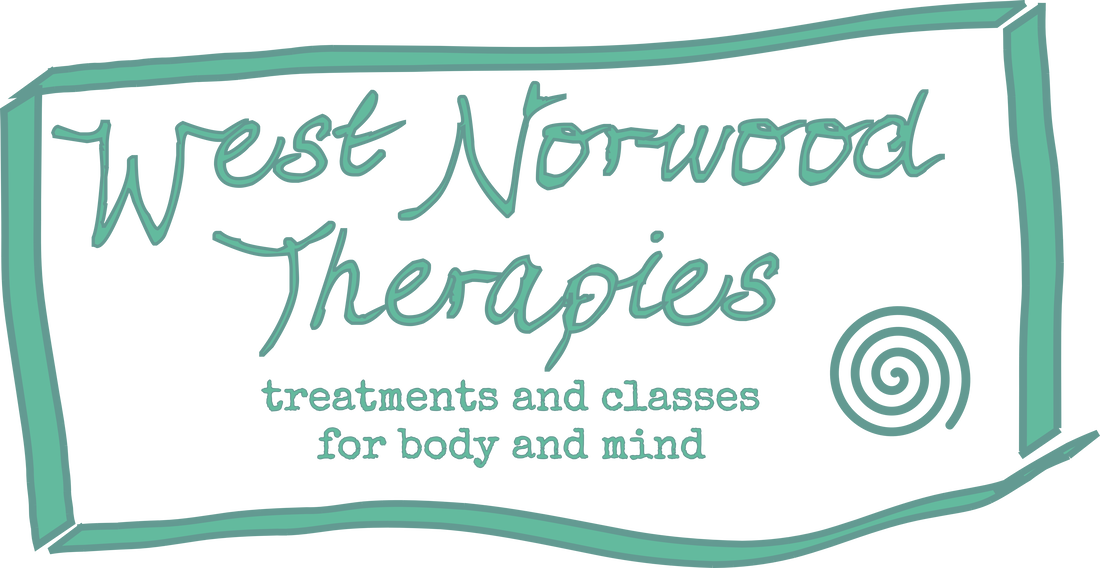|
Massage therapist and massage junkie Jennie Duck shares some of her favourite self-massage tools to use on in between the real deal massages. With AI swooping in to take over many jobs and roles I feel lucky to be confident that there is nothing that compares – or could compare – to the interpersonal connection and physical contact of a massage. The relationship with your therapist is part of this, a person you share with and ask for help – this can be a vulnerable and fairly intimate action, especially when it is followed by undressing! You place your trust in the therapist and the therapist – good ones anyway – will respond by basing their massage on the information you gave them and the feedback you give them through the treatment, from direct questions about the pressure to intuitive sensing of where you are holding tension that you are not even aware of. This relationship may be a one off or it may be one that lasts over many weeks, months and years. I have left massage sessions feeling enlivened, enthused, exhausted, delighted, excited, understood, supported, connected, soothed and sometimes pummelled 😊 Sometimes I am sore, sometimes I feel like I’m hungover the next day or two, sometimes I feel like I could run like a gazelle and sometimes like I could sleep for a week. I always get something from the session, often disproportionate to the hour that I spent having it. I learn about my body, I enjoy some rapport with some therapists and rare silence with others. I will never stop getting massages from a good therapist and I am looking forward to getting back to the privileged position of giving them next year after a long hiatus having children and relocating. In between massages I crave more and I also sometimes have to go longer periods between them when funds and/or time are tight so I have built up an array of things to see me through. I can do some self massage of course and often do on my forearms especially, but I often just wish it was someone else's hands and prefer to use tools, especially for getting into trickier to reach spots. These are my favourites (and links are just to show where I bought them, no affiliations!):
And now in getting the links from this blog I've spotted a foot massager so my birthday money might have a new purpose...that's one for next time!
Happy massaging!
0 Comments
With Karen joining us this month it felt like a good time to reflect on the range of therapies we now have on offer at WNT. It is our 10th anniversary this October – wowee 😊😊 – and over the decade we have had an alphabetic spectrum of treatments and classes from Acupuncture to Yoga with everything from Feldenkrais to Sports massage in between. So what do we have on offer now? Well, starting with massage where WNT began, we have a great range to choose from Sports and remedial massage with Tessa – Advanced booking required to see popular Tessa with her highly adept intensive treatments. She works with all sorts of athletes and desk-bound bodies to help free up stubborn tensions and encourage freer, more efficient movement. Tessa really is a master of her trade working with a range of deep tissue and trigger point techniques and using acupuncture needles in some sessions. Relaxing deep tissue massage with Erika – Erika has been in the massage business for over 20 years and her lovely strong hands work intuitively around the body, their experience meaning your body has easy confidence to relax and feel some relief. You can read Erika’s blogs and see how thoughtful, interesting and considered they are and her massage treatments are in the same vein, very nourishing. Tuina massage with Mihaly / Mike – Mihaly (also known as Mike) is a more recent addition to our team and we are so glad he joined! Mihaly has a lovely, peaceful, warm presence and his Tuina massage is very careful and intuitive. Tuina takes placed fully clothed and works along the meridians like acupuncture (which Mihaly also practises). This is a great treatment with Mihaly since he is a natural therapist and can help you work with acute and broader issues alike, often helping with lifestyle support. Philippa also practises tuina massage and tends to incorporate it into an acupuncture treatment when she feels it would benefit rather than offer it as a stand-alone treatment. And now we have another experienced pair of hands in Karen with Shiatsu. Similarly to tuina, Shiatsu works with meridians to open up stuck energy and uses stretching and pressure on points to help release and find relaxation and ease. Karen has been working in South London over the past 2 decades and her experience and skilful practice is a welcome addition to our team. And then we have a wealth of Acupuncture on offer too, which you can read more about in our blog, Acupuncture at WNT - three different approaches, who should I see? In brief, we have Philippa with a traditional TCM (Traditional Chinese Medicine) background and almost three decades of experience working in a broad range of professional settings, both privately and with the NHS. Philippa works a lot with women’s health, including menstrual issues, fertility through to post-natal recovery and menopause. Philippa’s treatments tend to be primarily pure acupuncture though she often incorporates some tui na massage into the treatment. Mihaly is also TCM trained and his treatments tend to be more of a blend of acupuncture with tui na massage and incorporates his background in martial arts into his approach. Mihaly’s interest is in the mind-body connection and developing this this both informs and is an outcome of his practice. Tessa uses acupuncture needles in a different way, her training is in Medical Acupuncture or Dry Needling which can be useful in treating musculoskeletal issues and helping to release stubborn tensions. Tessa uses these as an addendum to her sports massage treatments, incorporating them when she feels they’d be beneficial and the client is keen. And then we have some other treatments which are currently all offered by lovely Laura on a Saturday: Reflexology is Laura’s main practice, her warm and welcoming presence is popular with clients who report feeling the benefits of her kindness and empathy as well as her knowledgeable treatments. This foot treatment has an uncanny way of working on the whole body and can be profoundly relaxing and restorative as well as effective on specific aches, pains, digestive and menstrual challenges.
Reiki is another of Laura’s offerings and clients find this energetic work helpful in encouraging the body’s own healing capacity, a nourishing hands-off treatment that helps support the body emotionally and spiritually. And last but by no means least, Laura’s other skill is in sound bath healing and she offers one on one sessions at WNT – amazing sensation having bowls placed on the body and ‘played’ so you feel the vibrations and benefit from the deeply resonating sounds. This is a pretty special thing to have on offer and worth checking out if you have never experienced it. Massage therapist Erika Zettervall has embarked upon an experiment: can running help with depression? In this inspiring blog she shares her journey so far and some helpful resources for anyone interested in exploring whether running might be a good option for yourself in improving mental wellbeing. I have taken up running again, this time conducted as a little experiment to see how - or if - it affects my state of mind. Bluntly put, I’d like to see if it works to combat depression. My state of mind has been a bit low and dull, feeling uninspired and finding it hard to make decisions as well as difficulty concentrating. Perhaps that’s normal sign of ageing or symptomatic of my lifestyle with increased screen time and social media indulgence. According to psychiatrist Anders Hanson, running 30-45 minutes 3 times a week at 70% effort for at least 6 weeks would create changes in the brain that help with depression. My understanding is that there is a substance produced in the hippocampus and cerebral cortex in the brain called BDNF (Brain Derived Neurotrophic Factor) that protects, repairs and stimulates new brain cells. Having low levels of this substance is associated with depression. Medication increases these levels as does exercise. I have taken antidepressants in the past and found them helpful to some extent but not really making much difference long term and at this point it doesn’t feel necessary to seek them out. So, after finding a book on my bookshelf in the great unread section by Dr Anders Hansen writing about the benefits exercise in general, and running in particular, has on the brain as well as hearing him speak on Rangan Chatterjee’s podcast, Feel Better Live More, episode 38, I decided to give it a go. A simple explanation for these benefits is that our biology is still more in line with being a hunter gatherer and not suited for the abundant, convenient world we now live in. Shorter sessions of 20-30 minutes would also make improvements in the functions of the brain such as memory and creativity. The plan is to work up to the 45min sessions and keep it up for 6 weeks and see how I feel and then keep going with three times a week 30-45min sessions. It sounds a realistic and doable plan to have and curious to see how this will take me through the winter. No doubt shorter days and harsher weather will be a bit of challenge. Luckily, I have always liked running when I’m fit enough and I enjoy the striding movement. It’s a nice way to explore an area be it park, wood or neighbourhood. It is also a very accessible and simple way to exercise. No need for fancy memberships, class schedules or expensive equipment. Just put shoes on and go. I like the freedom of that. I am now 4 weeks in and it is a joy. Perhaps it’s the lovely, mild autumnal weather that brings a pep to my step. Starting out being in general good health and having a comfortable walking gait has been helpful (don’t run before you can walk as the saying goes) in having making it very pain free so far. Not focusing on speed or distance makes it very carefree. The first two weeks I went for 20-30 min sessions and this last week increased it to 45 min a couple of times.
As to how my mind is: Feeling a lot more inspired than I did a couple of weeks ago, but if that is down to the actual running or to setting and following a plan it’s hard to say. Having an intention with what you do, whatever it is, is also one of these things in life that can shift the mood.
Acupuncturist Philippa Summers suggests some local classes suitable from pregnancy to preschool and highlights which of the WNT team can support you around this busy, nurturing stage of life. As the nights begin to draw in and we withdraw inside a little more it can be more challenging to plan your days with a baby or toddler, and to look after your own well-being and fitness. Well, the good news is there are a wealth of opportunities out there, activities you can do with your baby or children and classes for yourself with your baby or at those precious moments you have to yourself. Just getting out and meeting up with other mums and dads can make a whole world of difference as you adjust to parenthood. Maybe you are looking for something specific or just want to browse and see what’s out there.
I came across a website, Happity, that makes searching for classes and events in your area a doddle. It covers everything from pregnancy through the baby and toddler years to age 5. Prices vary, some are free and some low cost from as little as £2. Among them are:
I know from my own experience and that of probably every parent I know just how important these groups are through this phase of life. If you are struggling with post-natal depression Happity also have a dedicated area of their website which includes links to useful resources. Check out their blog, too. I’d like to make a special mention for Gather-ed as they offer something a little different and I think much needed. They offer 1:1 support, workshops and group gatherings with experienced facilitators including midwives - ‘gently facilitated discussions on themes and topics relevant to parenthood…and are a space for honest, authentic conversations’. Wednesday mornings at Knowles in West Norwood, other classes in East Dulwich. Pregnancy Treatments at West Norwood Therapies Finally, we can help to support you throughout your pregnancy with our treatments at West Norwood Therapies:
Acupuncture: Some women choose to have regular acupuncture to support them throughout their pregnancy, but commonly it will be to help with a particular issue. In the early stages of pregnancy women often seek help for morning sickness and at the latter stages for breech presentation and birth preparation. For birth preparation there are advantages to starting treatment at 36 weeks but with the all-clear from your midwives we can also offer treatments when you are overdue and facing an induction. If you are trying to conceive Laura and Philippa also offer fertility focussed treatments, too. Please just get in touch if you’d like to find out more. Sports massage therapist Tessa Glover interviews her client Emily Hayter who is a competitive swimmer who trains with Spencer swimming club. Emily shares how she approaches training and competing and encourages us that swimming can be taken up at any age and stage. Thanks for sharing Emily! 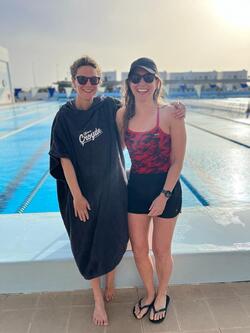 How long have you been a competitive swimmer? I always loved the water and I swam competitively for a few years in my early teens while I was living in Canada. I swam on and off on my own after that but was mainly keeping active through other things. After a 17 year break from club swimming I joined a Masters club, Spencer, in London in my early 30s and started competing again. How did you come to choose your preferred swimming stroke and distance? It's changed since I was younger, partly due to injuries (eg no breastroke because of my knees so no medley events anymore). The only one of my favourite events from when I was younger which I'm still doing is the 50m butterfly. One thing that's great about pool swimming is you learn and practise all four strokes, so everyone finds their own favourite. Aside from the 50 fly I race all freestyle, everything from 100m to 1500m. This year I'm also doing my first open water event which will be 3800m. At some point I might need to choose between the short and long distances though, as it's difficult to train for both at the same time. What do you love most about swimming? What does it give you? As an adult, swimming in a club has brought me back to a regular fitness schedule, guided by a coach and in the company of great fellow swimmers. I get so much more from it than I was getting just from going to the gym. I've also made new friends and started going on swimming trips like training camps at Club La Santa in Lanzarote and sea swimming holidays in Italy with SwimTrek. I feel inspired by the older swimmers in Masters, many of whom are still racing and setting records in their 60s and beyond. Club swimming has brought me great examples of how to stay fit in later life. What's the toughest part of training for a competition? I've always been more of a training person than a racing person. I like training and usually go 3 times a week with Spencer. Some people are the opposite, they love racing but not so much training. The unpredictability can be tough in both training and racing. You have good days and bad days in the pool, and they can be quite random (ie not linked to diet, rest etc) which can be discouraging. So trust and confidence in the training you've been doing throughout the year is important. There's also a lot of technique to think about in swimming, and we work on that all the time. It's difficult to change ingrained habits and patterns of movement, and it takes patience. I usually find that as soon as I fix one technique detail I start doing something else wrong! So it's a continuous process. Can a swimmer get into competitive swimming as an adult? Definitely! I know several people who only started doing lane swimming or learned all the strokes as adults and then got into competitions, either in pool/Masters swimming, open water or triathlon. At my club not everyone competes in pool competitions, some people do triathlon or open water and others just train for fitness and don't compete at all. How do you look after yourself physically and mentally? I do pilates a few times a week, which helps with management of old knee and back injuries that would otherwise prevent me from swimming. Swimming encourages me to do these types of conditioning exercises I should have been doing before but wasn't motivated to do. I used to do yoga but after learning more about hypermobility I swapped to pilates and find it better for me. I also go for massages with Tessa at WNT which really helps me manage a neck issue I've developed. I'm lucky to have generally good mental health. I try to maintain it through exercise, work/life balance, social life and occasional restorative yoga. I love food and eat a lot but generally pretty healthily. Another thing I should have mentioned that swimming gives me is the excuse for a lot of snacking.
How long have you been a swimmer and when did you discover the joy of open water swimming?
Although I learned to swim as a child I only took up Open Water swimming aged 51. As my youngest son finished his A levels, I found myself with more time at weekends. I know you consider yourself to be a slow swimmer compared to others but you are a strong endurance swimmer. When did you discover that you can swim long distances? And what’s the key to endurance swimming? After a few 1 mile (1.6km) lake swim events I decided I wanted to take on bigger challenges, so next up was a 1.9km then a 3km swim. I couldn't find anyone to join me for the Jubilee river 10km relay and ended up signing up to swim solo instead. It was at this point I decided I needed some swim coaching so joined Windrush Triathlon club, a multi-sports club in south London. After the Jubilee marathon I did several other long distance swims and also went on some open water swimming holidays. My tips for endurance swimming are to keep working on your swimming technique over winter, then gradually build up to longer distances in lakes, rivers and the sea as the weather warms up. Experience of being able to handle currents, cooler water and all weather conditions helps a lot. Breathing, technique and cardio fitness combined? Anything else? Relaxed breathing comes with practice and I would also recommend some strength and conditioning sessions and of course regular sports massages. What do you consider to be the main benefits of open water swimming? I experience a huge sense of wellbeing swimming outside. I love the sensation of moving through the water, hearing birds, seeing fish (sometimes) and feeling part of nature. The open water swimming community is extremely friendly and I love the challenge of different water conditions. A sea swim between the same two points will be different every single time so you never get bored. I like to think there are health benefits and I definitely feel more mentally resilient. What advice would you give to people who would like to try lake or sea swimming for the first time? Many venues have introductory sessions so I would try these. Don't wait until you can persuade a friend, as you will meet like-minded people there. For sea swimming I would rely on local knowledge and join online communities. For a first time open water swimmer, what are essential items they should buy/borrow? Essential items are a comfortable swimming costume, a brightly coloured swim cap and goggles. If you want to try a longer swim and/or cooler water, a wetsuit is recommended. You can hire these at many venues if you want to try one out. I bought my first wetsuit second-hand. Make sure it is a swimming wetsuit though, a surfing one will restrict your shoulders. I would also recommend a tow-float unless it is very windy and the first time you swim against the current (outside an organised event), fins can be useful. Margi is Swim Captain at Windrush Triathlon Club https://windrushtri.co.uk/swimming Massage therapist Erika Zettervall explores our senses - the big 5 and some lesser recognised ones that shape our experiences - and suggests some ways of using this to cultivate calm and a richer experience. We have five main senses that we all are likely to be very familiar with and three or four lesser known senses. These are connected to sensory organs. 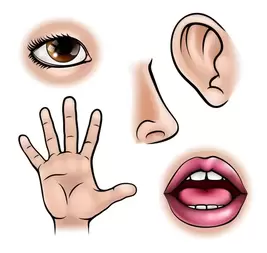 Our main senses: Vision - eyes Touch - skin Hearing - ears Smell - nose Taste- tongue The lesser known senses are perhaps just ones that have not been incorporated into everyday thinking about senses. There are several and it varies depending on how much you break them down into finer systems and functions.
Balance – the vestibular system – tells us whether we’re in equilibrium or not, and whether we’re in motion or not. We have the inner ear to thank for that one. The sense of pain – nociception – is nerve or tissue damage felt in the skin, joints, bones, and internal organs. Proprioception or position Temperature There is also interoception related to how things feel on the inside for example blood pressure, sense of stretch in the bladder Through external sensory input our brains interpret nerve signals and conjure up a picture that gives us all a unique view of the world. Colour adds a dimension to seeing and we all experience colour differently. The artist Cezanne described it as where the brain and the universe meet. Practicing a wider sensory awareness will create a richness in life and is useful to bring calm and presence. A simple way to bring to ground yourself and reduce anxiety is tuning into the five main senses: What can I see: looking around, pick large or small items to focus on, try to notice the colour, texture, and patterns. What can I touch: notice skin whilst taking palm to palm, fabric of clothes, any object you can pick up and touch, putting hand (or body) into water. What do I hear: near, far, from different directions and volume. What can I smell: you can bring things to your nose but also notice if and what you can pick up from the air. What do I taste: if you don’t have anything at hand think about distinct flavours as you remember them like lemon, coffee, something sweet, Noticing and observing the sensations from the surroundings brings you into the space and present to the moment. It also orientates you into the now, geographically and in time. In addition it will also subtly enrich and broaden any experience. With anxiety we are away worrying about what may or may not happen, sometimes completely fictional but the fear appears real. Becoming present in the moment this way aids the distinction between factual and fictional fears. For example; good to hear a car approaching whilst out walking rather than being away in the mind somewhere else, worrying about things that might or might not happen. Since we have a focus on water and swimming with our blogs from West Norwood Therapies this summer, a suggestion from me is to bring your senses into interactions with water. Apart from taste for obvious reasons. When immersing into water notice the sensations on the skin, sense the texture, temperature and scent. The sea water is very different to a lake or pool in texture, scent and colour. Listen for the sounds both being in, under and around water. If you are by the coast, gaze out at the offing, where the sky meets the ocean. Pay attention to the sounds sounds and smells and you can have an awe-inducing full body/mind experience. Observe water move - be it waves of the sea, swirling brook, big water fall or rain is mesmerising and meditative, adding the sound and smell of it the experience swells. Stepping out just after rain, scenting the petrichor brings calm and joy. Bring your senses to your summer water adventures and see if it will increase experience of awe and joy. Sports massage therapist Lauren O'Sullivan shares some insights into what 'sports massage' actually is and the fact that it's benefits go far beyond sports people and also how the treatment might be adapted to suit you individually. The term ‘Sports Massage’ can sometimes be misleading if taken literally. It is of course a very useful, and often necessary, treatment for sports people, but it can also be beneficial for a whole host of different people. People working from home since the start of the pandemic might not have the best ergonomic set-up and as a result are experiencing neck or back pain. Take delivery drivers, who are sat in the same position all day, using the same restrictive movement patterns to drive. Think of the security guard, standing in a stationary position on their feet most of the day. All of these people and more are using their bodies in a way that will build muscle tension, increase areas of restriction within the soft tissues, and cause restrictions in ranges and ease of movement. Sports massage can help them! Sports massage helps to resolve chronic pain, injuries, muscle aches and restricted range of movement. At some point in our life, we have or will experience one of the issues listed above. What is great about sports massage is that it uses a range of techniques to assess and treat a problem, rather than following a repeated routine of massage strokes. Each treatment is tailored to the individual and your therapist will spend some time talking to you and listening to your story before assessing you physically. I have treated countless individuals and even if the problem seems to be manifesting in the same way, every body is different and responds differently to treatment, so no two treatments are ever exactly the same. Something that seems to put people off getting a sports massage is the reported pain that comes with it. Whilst some techniques can and will cause some degree of pain, it is never the goal of sports massage to cause pain. Your therapist should maintain good communication with you throughout the treatment in regards to pressure and pain, and make use of your breathing to help with relaxation in those more intense moments. I always give my clients a choice if I think that a certain technique is going to really help them but I know that it will be painful for them. I explain the technique beforehand and constantly check in during the application, giving them the choice to bow out at any point. Any deeper massage strokes are always applied very slowly, giving the tissues time to adapt and let me in without causing damage. If somebody is new to sports massage or is feeling particularly sensitive, I use lighter techniques to work with more superficial soft tissue. Sometimes, a lighter more relaxing touch is exactly what the client needs and it is important to realise that massage is mostly affecting the neuromuscular system rather than effecting change physically. Stress is a major factor is some muscle tension, particularly if focused around the shoulders. The nervous system responds to stress by increasing muscle contraction in order to protect the body and prepare it for fight or flight. A relaxing and gentle approach can melt away the tension because the nervous system is responding to that touch and sending signals to ease off protective muscle tension.  A sports massage should leave you with a feeling of freedom within your body, feeling lighter and moving with more ease. You shouldn’t feel limited by discomfort in your daily activities. Those little everyday stresses on your body can develop into chronic problems if left to their own devices. Sports massage plays an important part in the recovery process, whether that’s from an intense training regime or from everyday stressors. Regular massage allows the body to function with less restriction and the hands on approach provides an important element of social touch, something that has been lacking since the start of the pandemic. If you haven’t before, give sports massage a go this year and see the difference it could make in your life. WNT founder Jennie Duck expands on the question Why Do We Do What We Do in her blog reflecting on what she loves and misses about being a massage therapist and how finding a therapist you connect with is so important. Our team at WNT has been considering the question Why Do We Do What We Do? in honour of International Wellness Week and it’s made me miss working with clients more than ever!
For various reasons I haven’t worked as a massage therapist for 4 years now and I crave the return. I was setting up a treatment space at the start of 2020 but then covid hit and all of us had to hold back with the work we know can help so much, it has been tantalising for all! Helping people is a huge part of why I want to get back to it. During my time not working I have continued to be a client to various practitioners as well as interactions with medical professionals and I am all the more acutely aware of why what we do is so valuable. The hour that we spend with our clients is precious time, it is an intimate, intricate and opportunistic time where the bond that we develop allows our work to do its magic. Bodywork therapists have knowledge and intuition and skill and if we can hold the space for what needs attention and a good connection happens with the client then these all fuse together to give a powerful result. One thing I love is how my work as a massage therapist is to combine the science of my training in anatomy, physiology and massage therapy with intuition that comes from an innate sensitivity as well as hours of listening and working with clients. This combination of science and intuition leads to massage being a form of art – I sort of let my hands (and forearms and elbows!) go and find what they need to find. This makes massage a creative outlet for me and one that is in a relationship with someone that I am working with, so it is strongly connecting and rewarding in that way. Each of us in the team at WNT has our own approach to work – even when our treatments are ostensibly similar we are each unique as practitioners and how we approach our work. It is really a personal thing and, I believe, that that personal aspect is what makes our work so valuable. Connection really does have a powerful impact and I always encourage people to find the practitioner you connect with as this can determine the potency of your treatment and make it all the more enjoyable too. Massage therapist Erika Zettervall explores what a good night's sleep can do for us and how this can be a challenge for many. In this interesting blog she share some helpful techniques for preparing and helping yourself get a quality night's sleep A great part of our lifetime is spend sleeping - almost 1/3 provided we get 7-8 hours of it per night. We all know how good sleep is essential for maintaining health and good mood. Sleep plays crucial role in maintaining the nervous system in general and the brain in particular. This week leading up to the vernal equinox marks “World sleep day” highlighting the importance of good sleep. Plenty advice will be published and many top tips for our sweet dreams. Unfortunately, it’s not just what we know or how to do something that makes the difference but what we do with it. Implementing good routines and breaking habits might require a bit of effort but well worth it if the result is sweet sleep. Recently I was chatting with one of my neighbours when mentioning I sleep really well, she made the comment “ability to sleep is like a super power”. That’s crazy, that it would be so unattainable, but my guess it’s like that for many and not being able to switch to sleep is torturous. Yet all that is required is to lay down close your eyes, relax and drift off into sweet slumber. Falling asleep is remembering a sweet safe place and let go. I have not always had this ease with sleep and have experienced periods of insomnia and disturbing dreaming. Sleep is an elixir for our health and must be important otherwise we might have evolved out of it as it is a quite a vulnerable state. That could explain the division between night owls and early birds. Somebody need to be awake to keep watch. In English we say fall asleep, implying a letting go. We also use the term dropping off, when going to sleep, indicating a motion of fall and that is often how it feels in the mind. Relinquishing control, we trust we will wake up again (on time), that we can safely drop into the unknown, where the subconscious can and will make itself heard and seen in the form of dreams. I find dreaming fascinating, it can help you understand yourself. Dreams can also be very intense, loud, vivid, frightening and disruptive. To ease and begin to understand deeper parts of myself I was encouraged to practice directing the dreams. When becoming aware of dreaming without actually waking up, called lucid dreaming, see if the scene could be changed. I was also encouraged to go back to dreams when waking up. Just dropping back into the dream and create a different outcome, softening and calming the mind and reducing nightmares. Create bedtime routines of preparing for sleep a bit like a plane coming into landing. Slow down and take care of the physical space and body. Set an alarm or reminder an hour or so before bed time to prompt preparing for bed and what needs to be in place for the following day, so that you can actually go to bed when you had intended to be in bed. Allow for some time to settle into bed before lights out. Regulate the intake of stimulants such as food (big meal near bedtime and type of food such spice and garlic), drinks (alcohol, coffee) and visual stimulus such as movie/television/or social media. Read in black and white or give the eyes a rest or listen to an audio book. Treat your bed and bedroom with respect and as the place for rest. Simple things such as making your bed every day and caring for sheets and bedding. Crisp clean sheet is a simple luxury and gesture to the importance of sleep. Invest in good quality and look after it, you spend a many hours in bed after all. Keeping a set bedtime but also keeping a wake up time, some say this is more important than regular bedtime to cultivate good regular sleep. Sleeping in, is not great for establishing healthy sleep or for making up lost hours of sleep. We humans like a rhythm and respond well to it. Soften sensory input from sound and light. Some sounds are hard to regulate when living in a crowded city where people’s life goes on in close proximity. Softening can be achieved in form of textiles, insulation and white noise, like a fan. When we think of light Black out curtains might be good, but if there is a small gap the light gets focused cutting though like laser beam through the room, so softening by a fabric or shutter that create shaded light. For the content baby or pet or human for that matter this does not matter they have the ability to just switch off and fall sleep. Not disturbed by noise or light. To switch off we need to relax and that takes practice. Perhaps it shouldn’t be that way. Tiredness and lack of sleep is very common and instead of rest we often end up with a false relaxation, getting stuck watching television or searching the internet, still feeding sensory input through our eyes and stimulating the brain. If the mind is playing tricks and it’s hard to relax try to soothe it. Breathing equally 6s in 6s out coming into an optimal rhythm for heart and brain. To this add colour going though the alphabet backwards. Colour almost rainbow but going red, orange, yellow, green, sky blue, dark blue, violet, purple, black night sky with stars and then clear light. Big letters tuning small. Big red A turning small, big orange B turning small and so on. For best quality of sleep you need to breath through your nose. Snoring is not just disrupting to your bedroom companion is also disruptive to the snorer. The struggle to get oxygen into the system will wake you repeatedly. There is a simple solution to this. Just put a latch on your mouth encouraging the nasal solution when looking for air. The latch - small piece of tape. I thought it absolutely mad when I first heard of it, but a month later I am kind of hooked. I do waking up a lot clearer in mind than I used to, no brain fog and no trips to the loo in the night. Happy sleeping zzzzzzzzzzzzzzz |
AuthorBlogs from the WNT team. For our blogs from before June 2020 please see individual profile pages - it's a good way to get to know practitioners too. Archives
June 2024
Categories
All
|
|
Visit us - by appointment only please - in the office block in the Access Self Storage premises at 443 Norwood Road, London, SE27 9DQ
[email protected] Phone - please contact practitioners directly, or if not in a rush you can leave a message for us to call you back at 07931876931. |



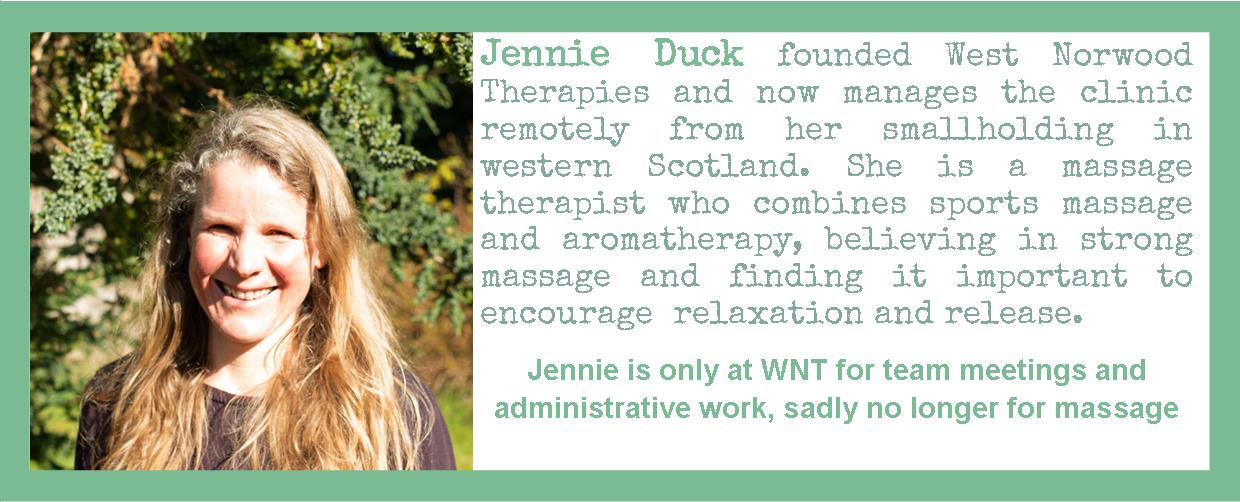
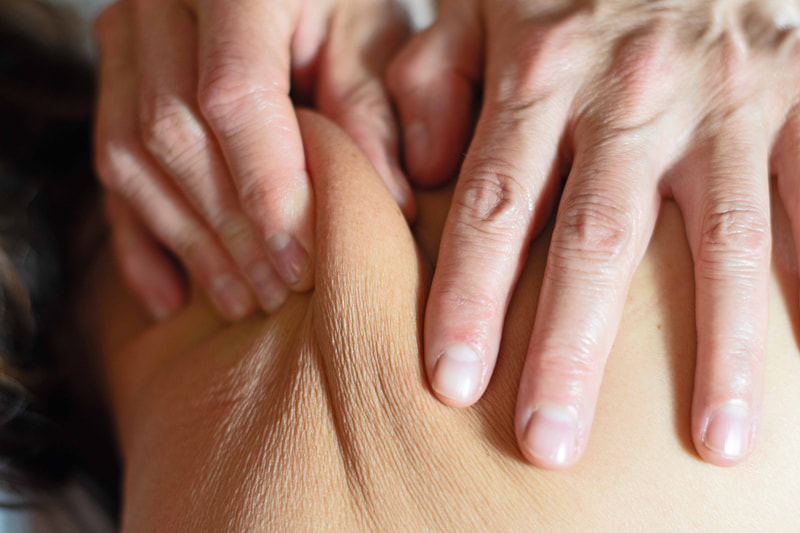
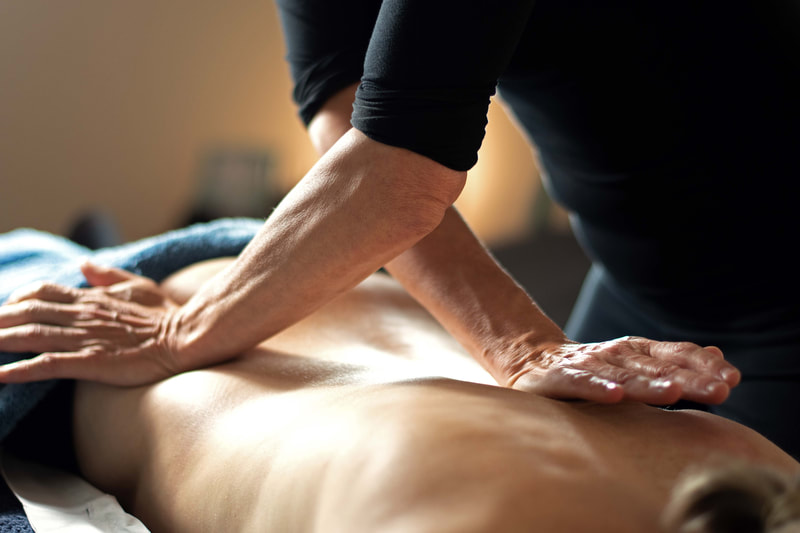
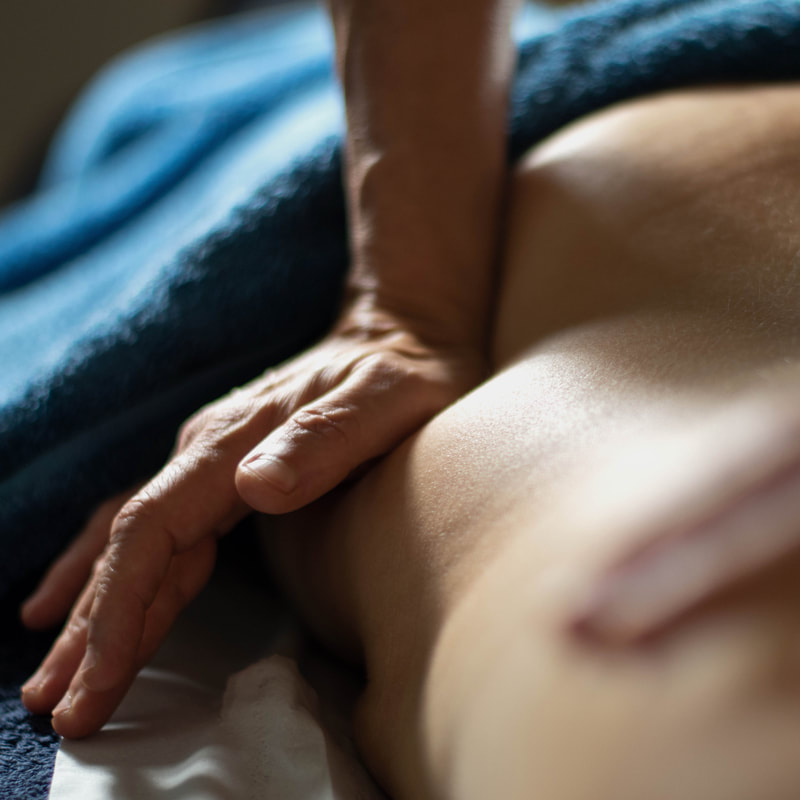
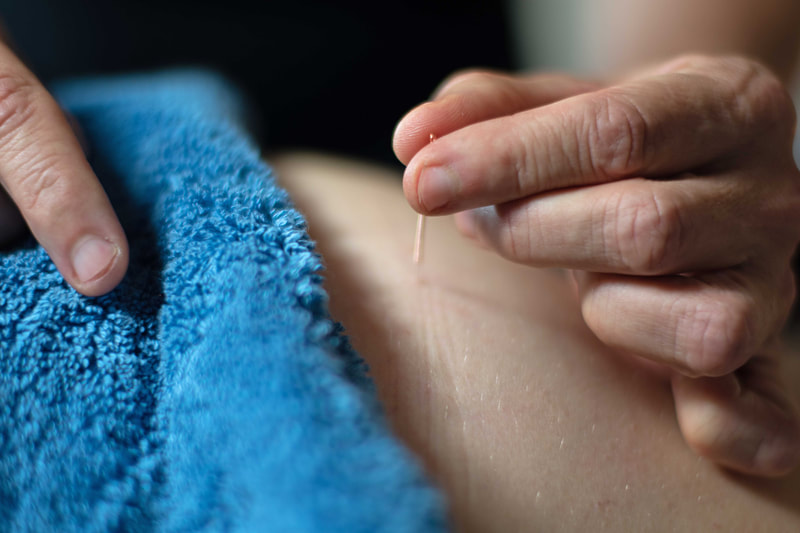
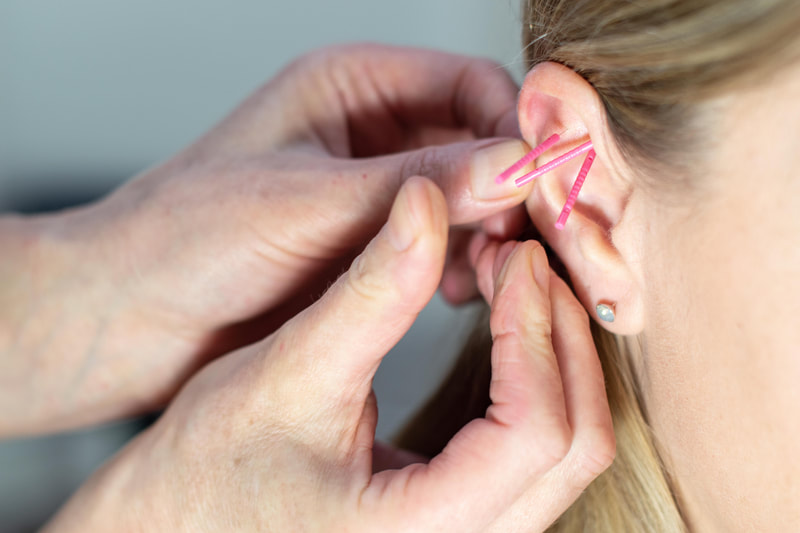
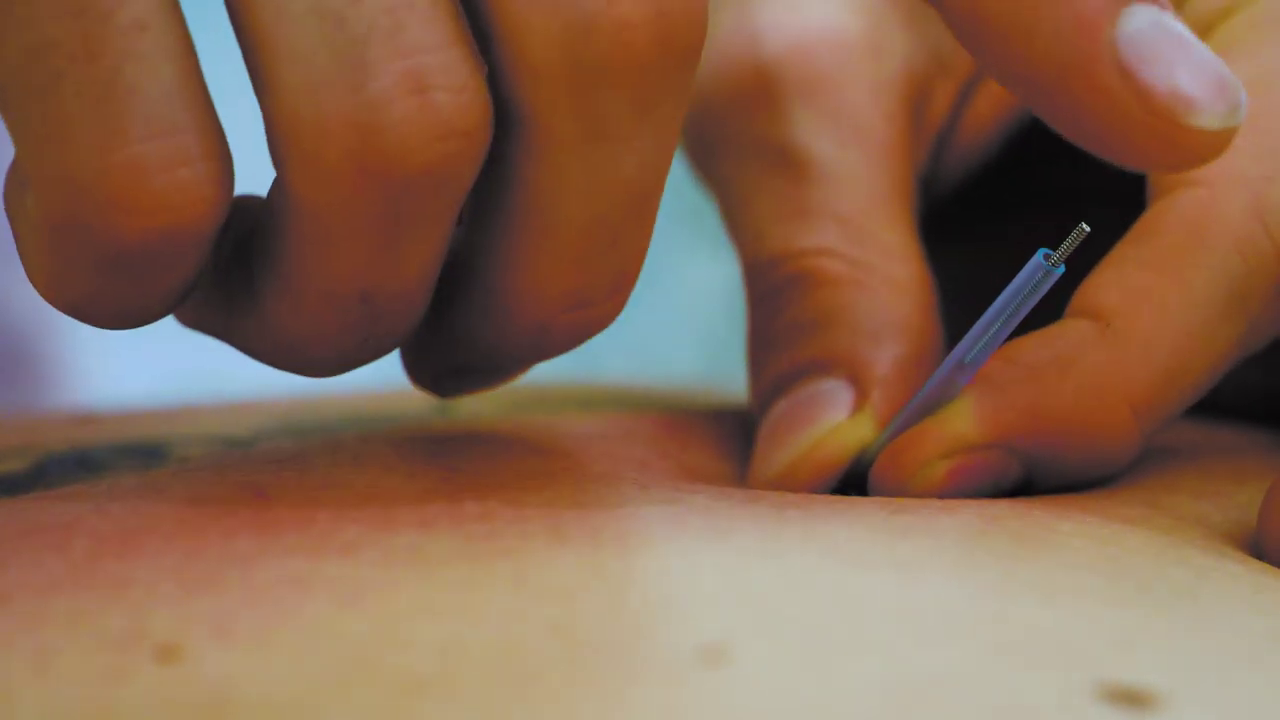
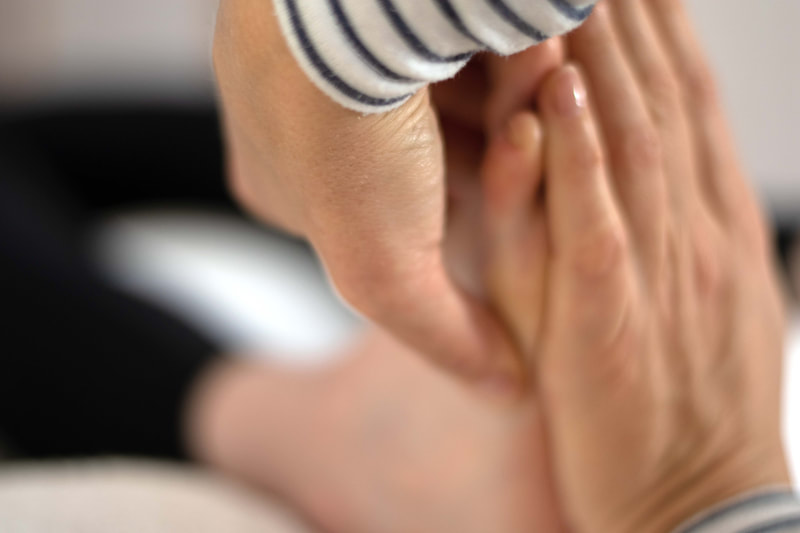
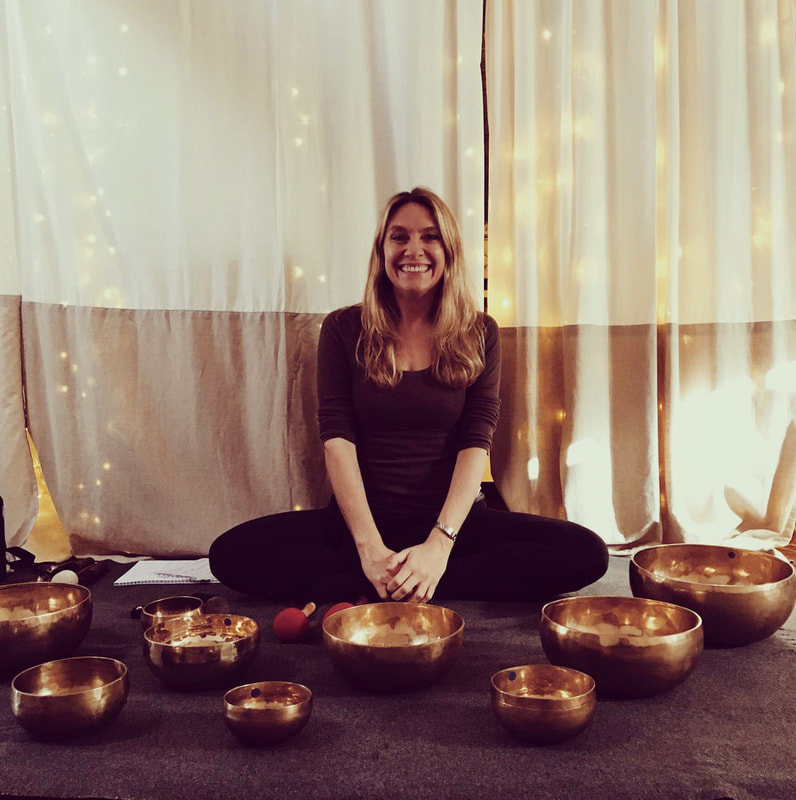
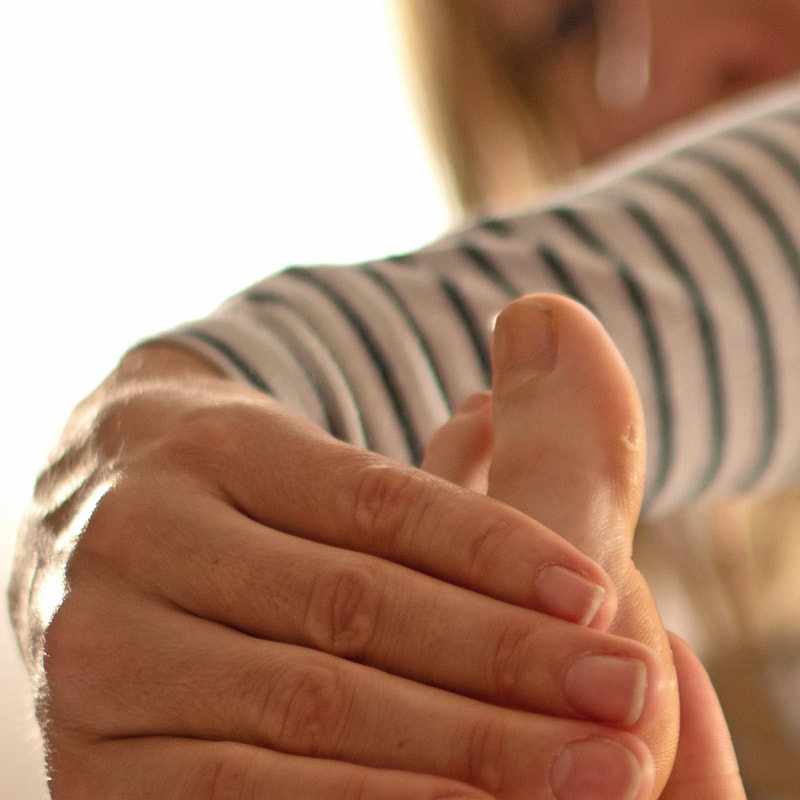
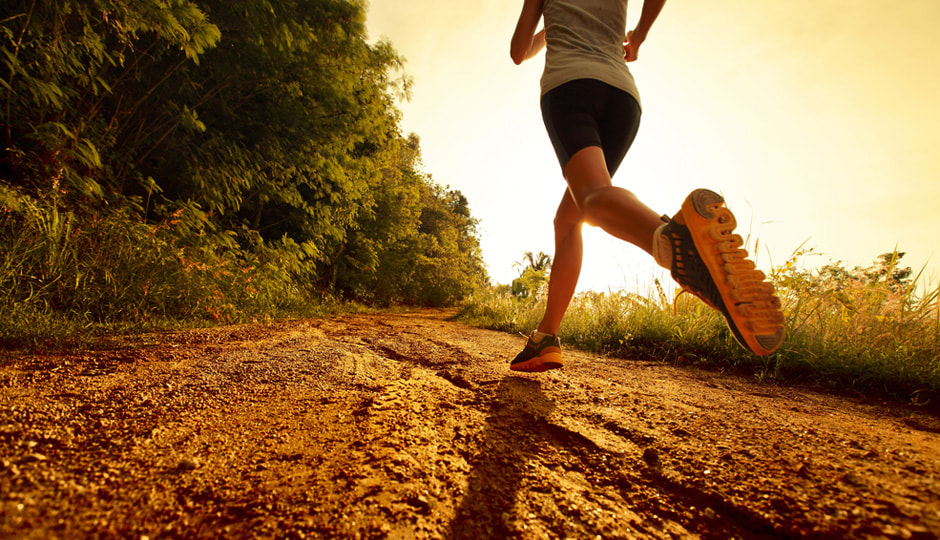
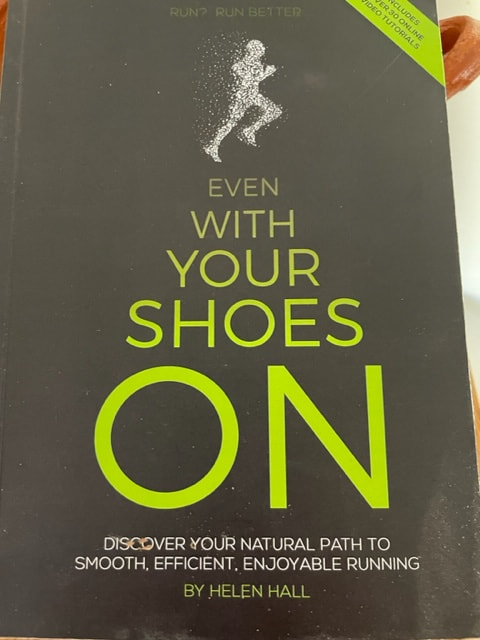
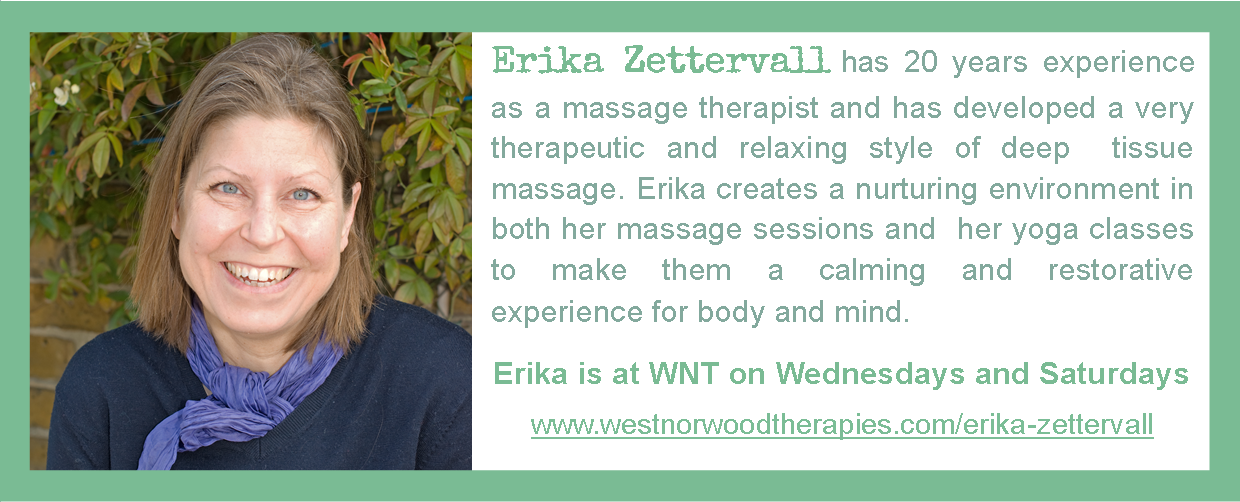
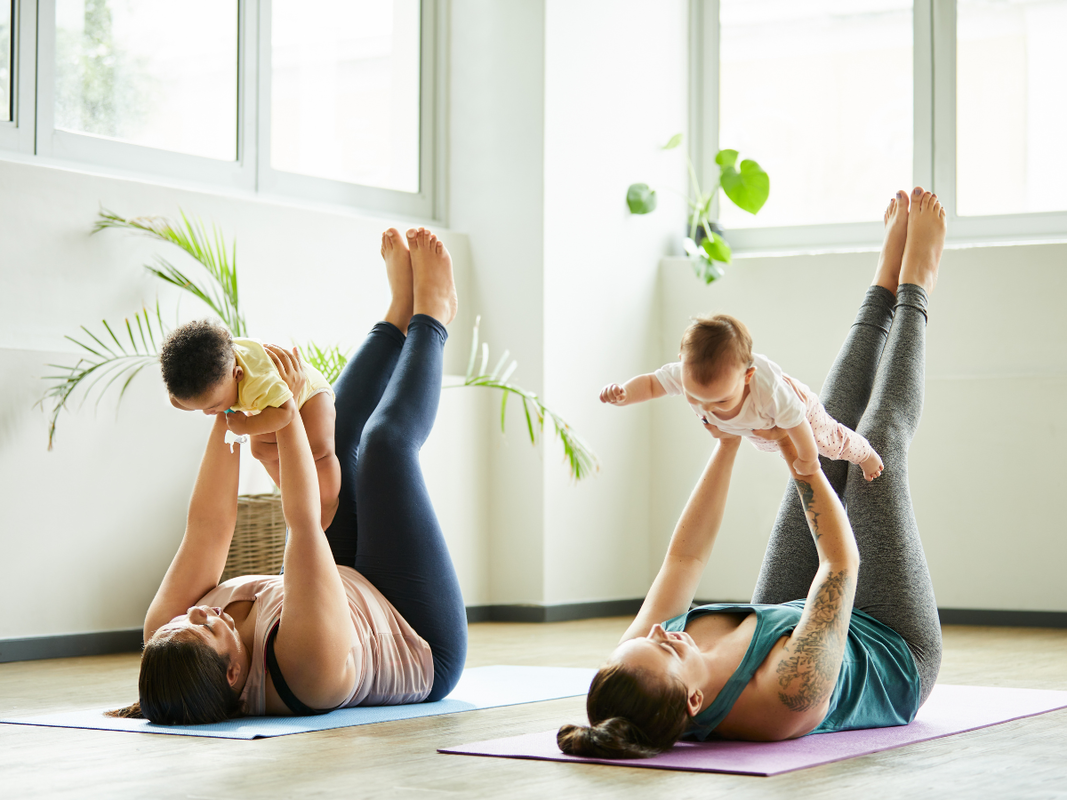
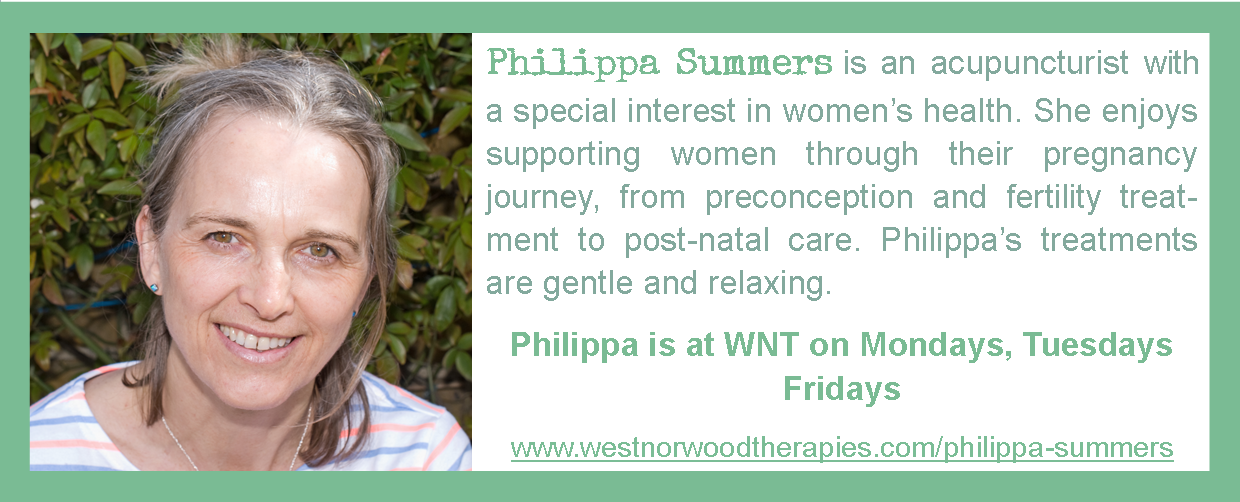
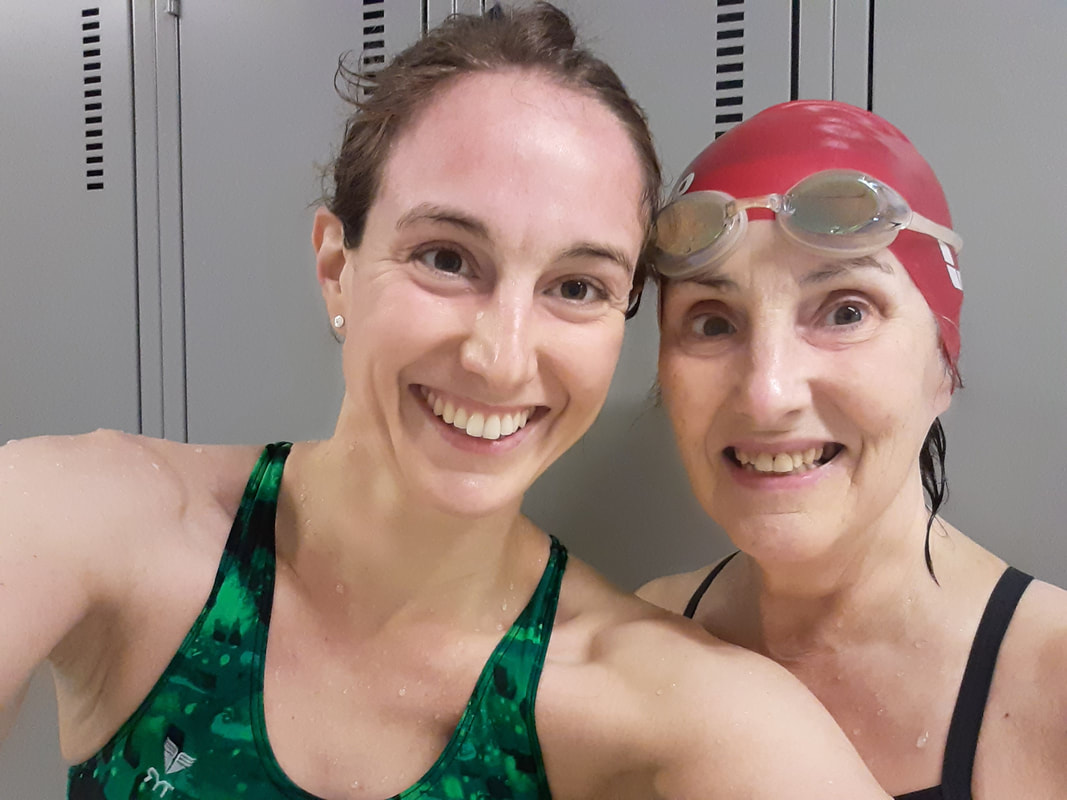
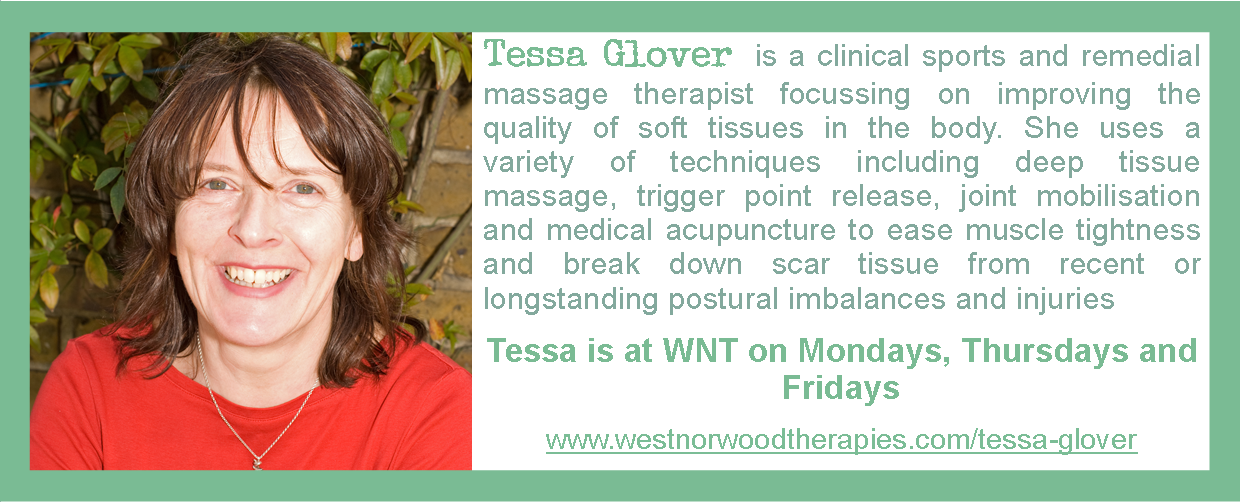

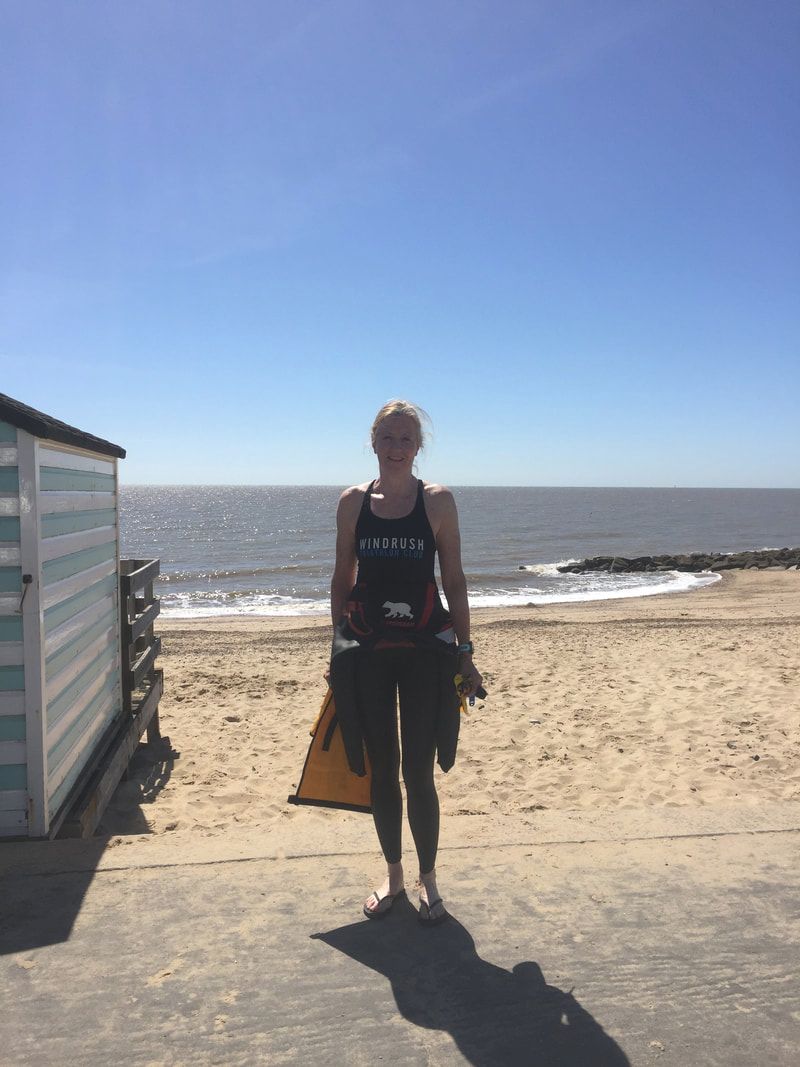
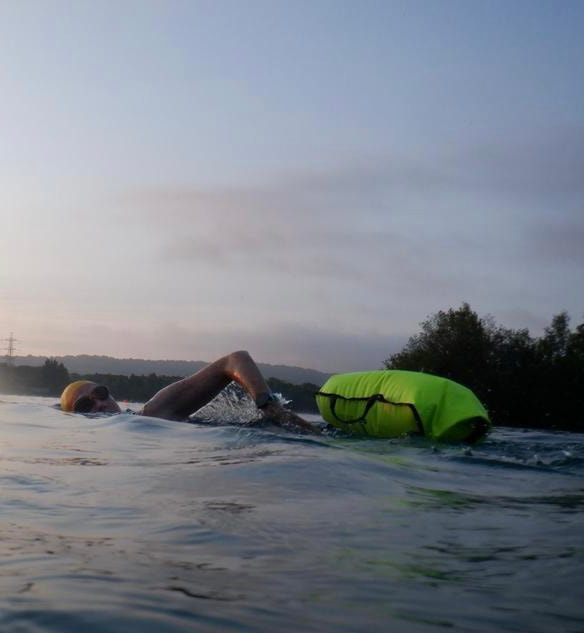
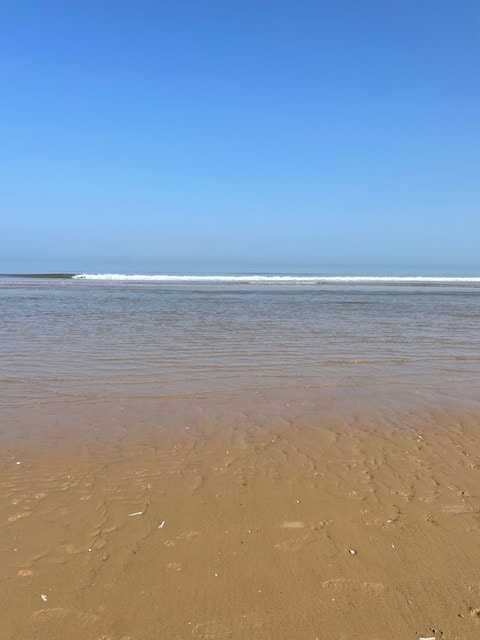
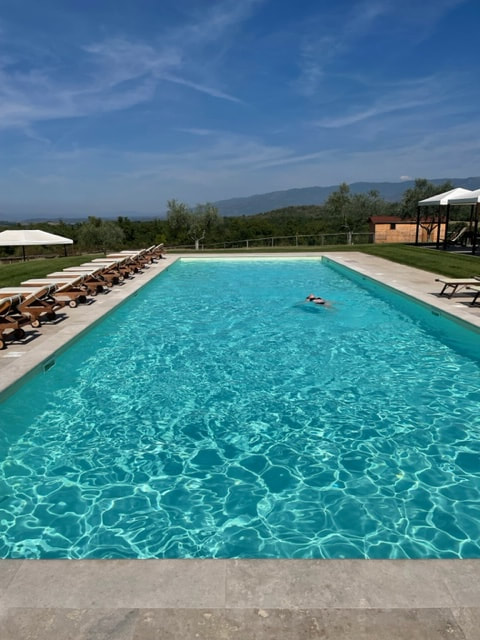


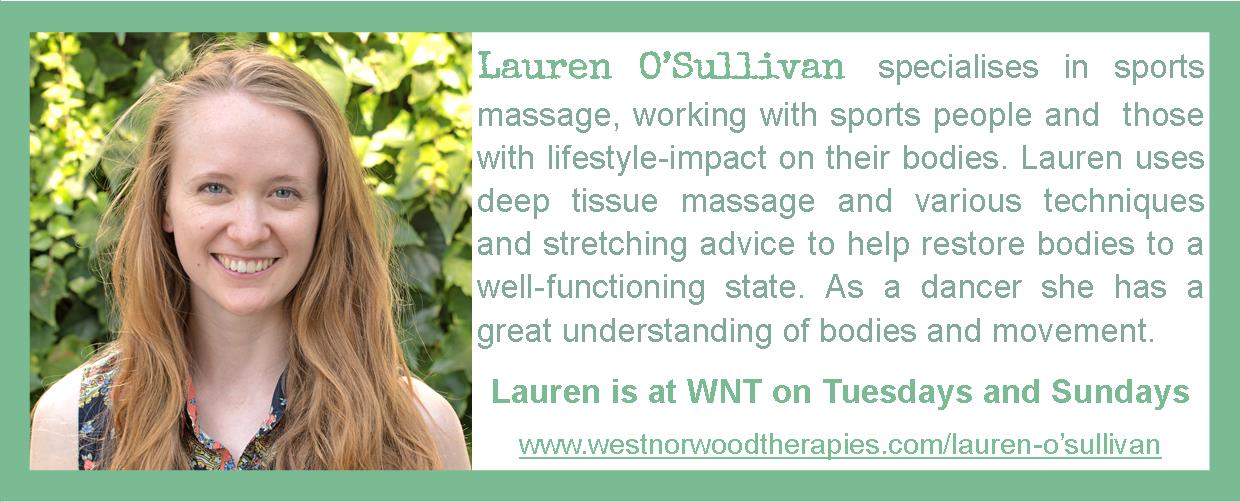
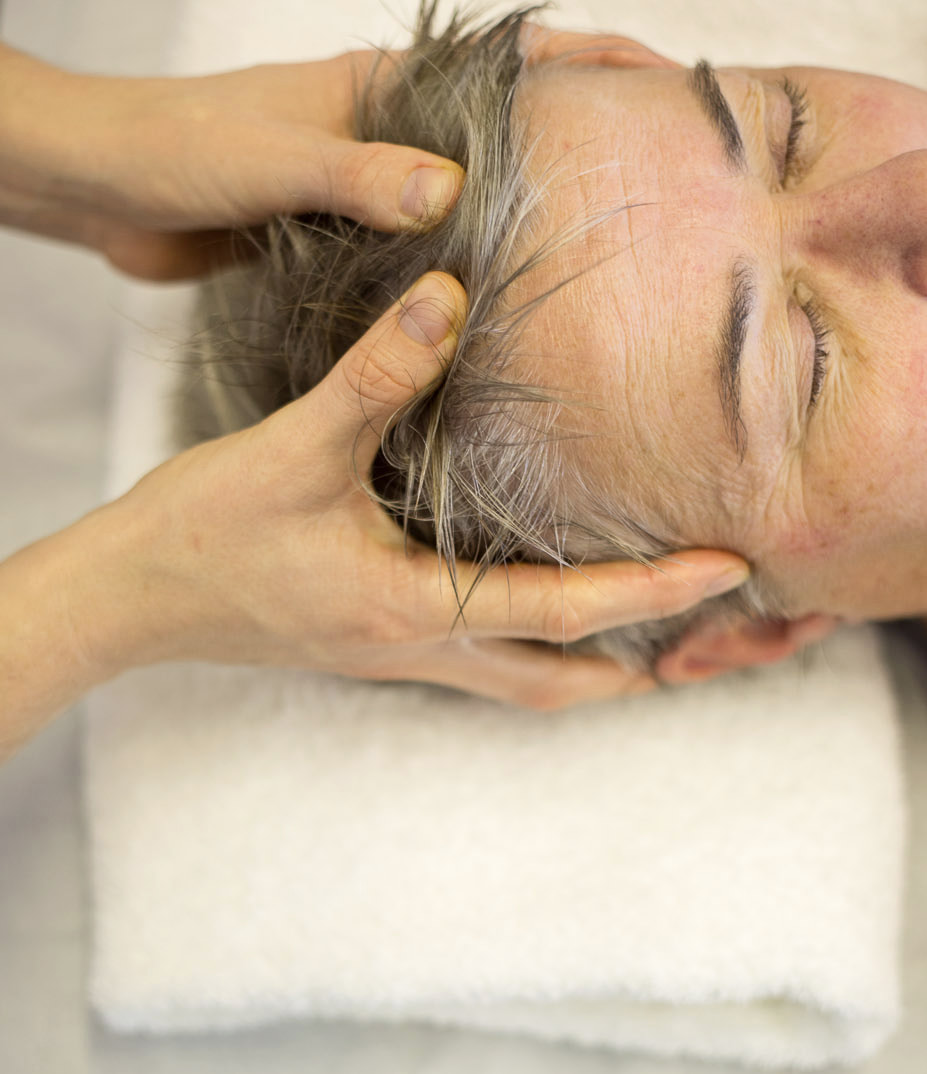
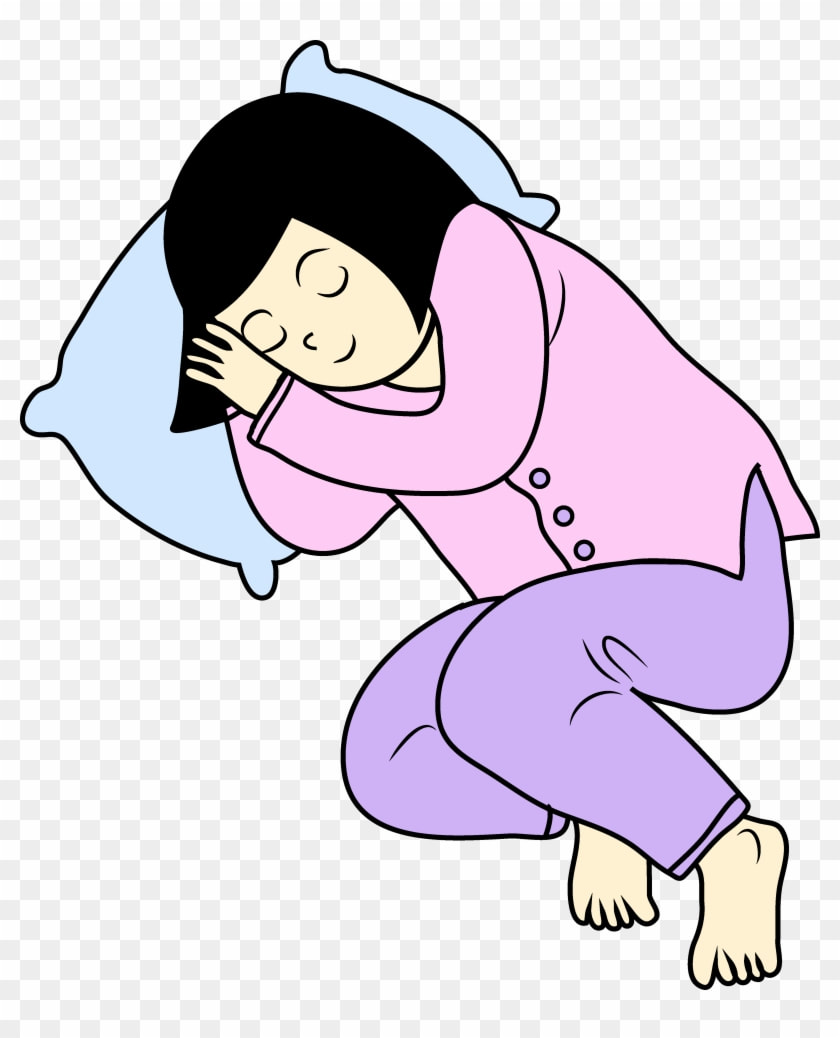
 RSS Feed
RSS Feed
